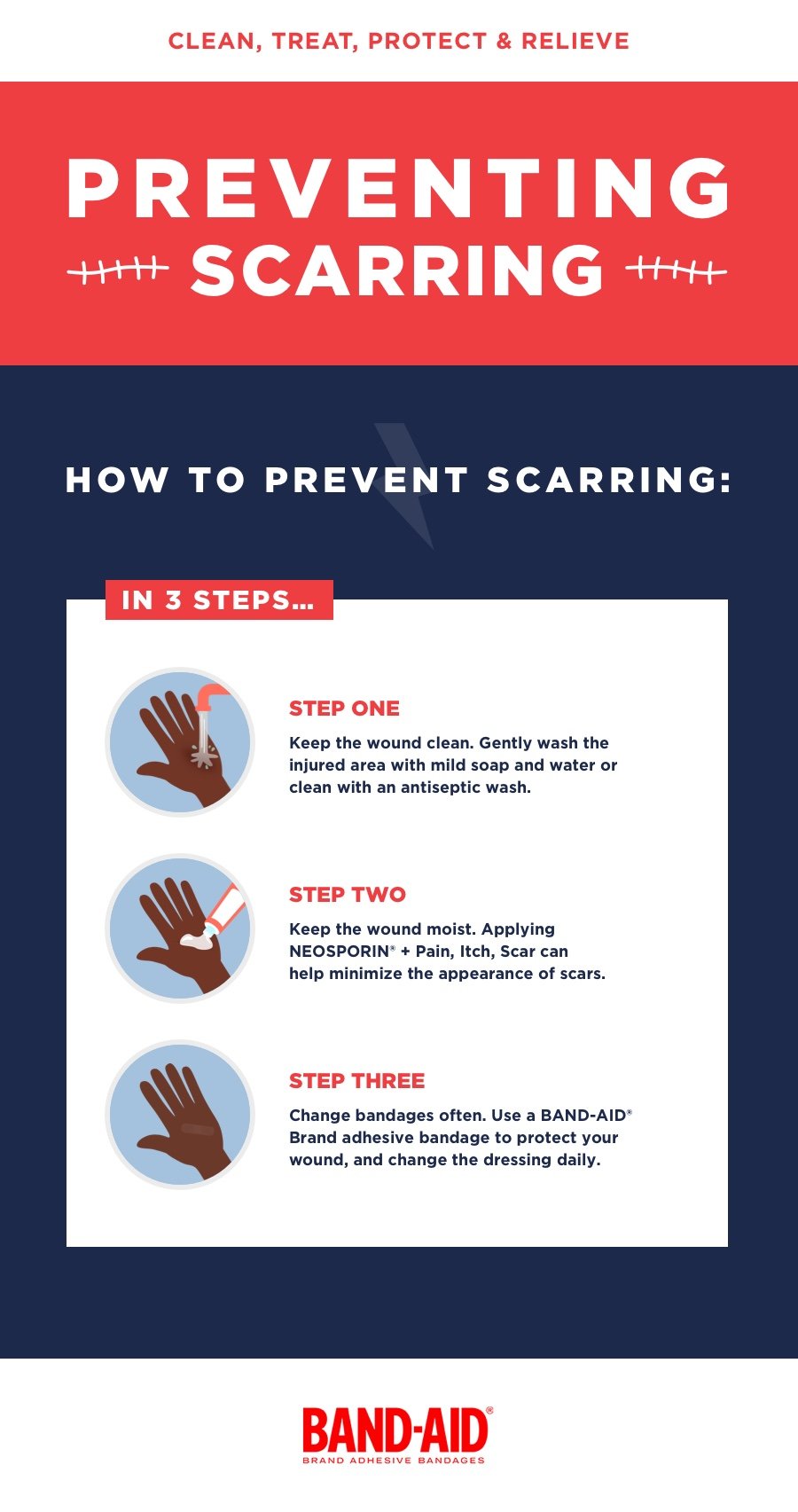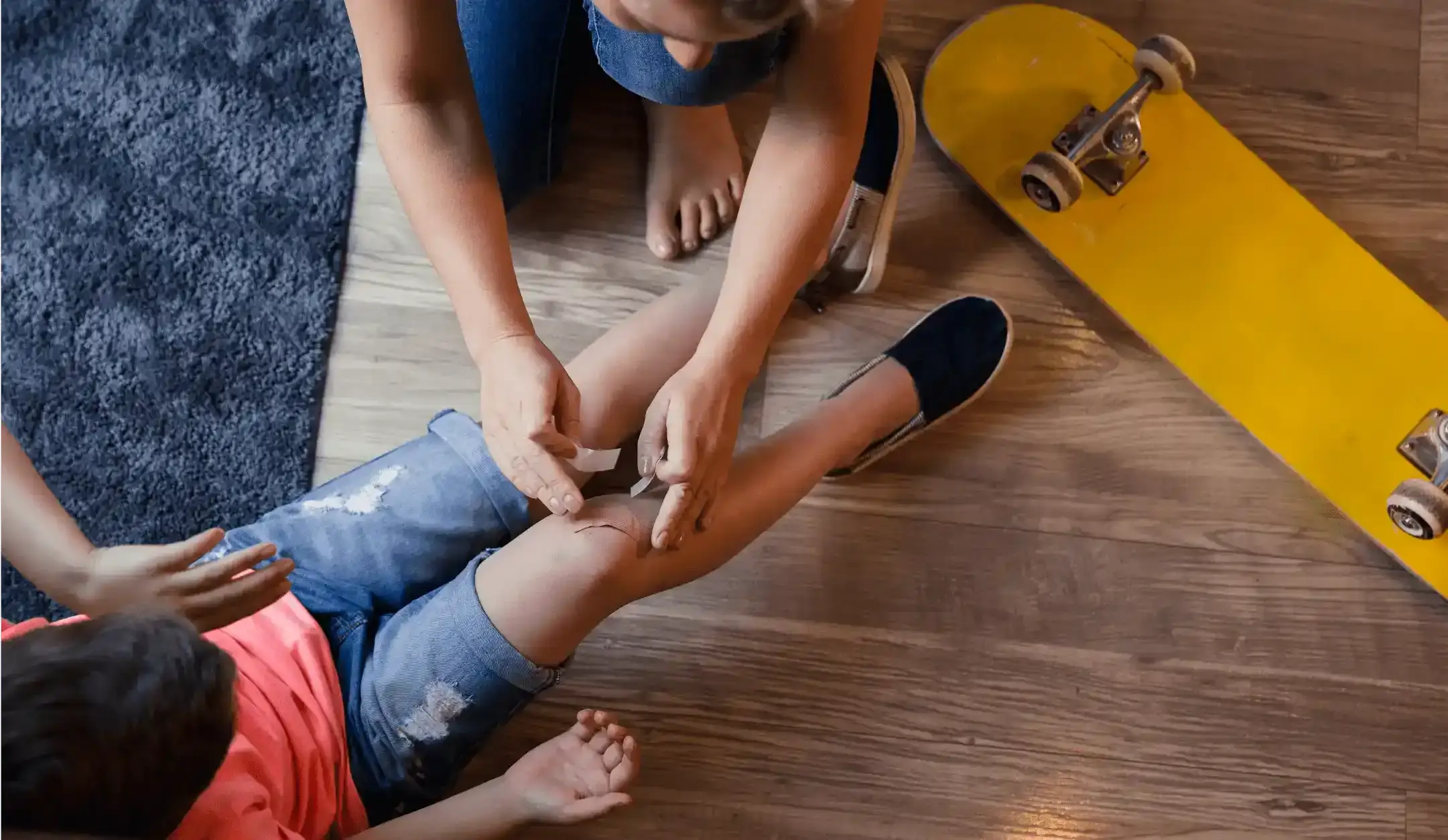What Is a Scar?
Scarring is your body’s way of healing an injury and replacing lost or damaged skin. Scars can form for many different reasons.
What causes scars, and what is scar tissue?
Scars happen as a result of the tearing of the dermis, the collagen-rich lower level of the skin2. When your skin is injured, your body triggers a healing response that builds the protein collagen to repair the skin and close any gaps. This new skin – scar tissue – will always be different to the original skin in that area2.
As we grow older, our bodies lose collagen. This is why older people are more susceptible to scarring than children2. Scarring can also depend on where the injury is, because the better the level of circulation, the smaller the chance of a scar forming2. Luckily, faces are among the parts of the body where circulation is good. A cut on the foot will likely take longer to heal2.
Common types of scars
There are three main types of scars, caused by varying degrees of collagen response to the injury:
Atrophic – indented scars that form when the skin doesn’t regenerate enough collagen to replace original tissue. Atrophic scars include those caused by acne or chickenpox2
Hypertrophic – thick, raised and often reddish scars that are common in taut skin areas after trauma, burns or surgical incisions3
Keloid – thick, raised and extending beyond the original injury site. These scars are created when too much collagen is produced. Some people may be genetically predisposed to keloid scarring2
What causes acne scars?
Acne scars are caused by the inflammation of acne blemishes, where a pore swells and the wall of the pore breaks down4.
When blemishes are small, the scars are shallow and can heal quickly4. But sometimes the contents of blemishes can spill into surrounding tissue and the scars are deeper4. Depending on the body’s response, acne scars can be atrophic, hypertrophic or keloid.
What causes keloids?
Even skin experts aren’t entirely sure what causes keloids5. Many agree that the most likely explanation for too much collagen being released after an injury is a dysfunction of the process5.
Keloids can be caused by any form of skin injury, whether minor scratches and bumps, insect bites, acne, body piercings or burns. Although keloids are somewhat mysterious, risk factors include:
Skin color – keloids are most common in those with darker skin, but the reasons are unknown5
Genetics – keloids can run in the family5
Age – you’re most likely to develop keloid scarring between the ages of 20 and 305
How to Help Prevent Scarring
Proper wound care techniques can help a wound to heal fast and may help to prevent and reduce scarring.

Keep the wound clean
Gently wash the injured area with mild soap and water to keep germs out and remove any dirt, debris6 and blood7 or clean with an antiseptic wash.
Keep the wound covered and use ointment
It’s important to keep a wound covered as this will help prevent germs getting in and causing an infection. You should also keep the area moist to help prevent scarring. Applying NEOSPORIN® + Pain, Itch, Scar helps minimize the appearance of scars, prevent infection, and relieve itching and pain.
Do scabs cause scars?
If you pick at a scab, it can cause inflammation. This may then lead to scarring. That’s why an ointment that can reduce itching, such as NEOSPORIN® + Pain, Itch, Scar, is recommended.
Change bandages often
Once the wound is clean and ointment applied, use a BAND-AID® Brand adhesive bandage to protect it. You should change the dressing daily8 to keep it as clean as possible while it heals. If your skin is sensitive to adhesives, you could use a non-adhesive gauze pad instead8.
Many mild wounds can be treated and protected with the use of over-the-counter products such as NEOSPORIN® and BAND-AID® Brand’s line of adhesive bandages. However, for more serious injuries you should seek help from a healthcare professional. If the wound is not healing or looks like it may be infected, seek medical help.
How to Help Prevent Burn Scars
Depending on the size of the burn, you may need to hold it under water for longer than other types of injury. It’s recommended to keep it under cool water for between five and 30 minutes9
After soaking, gently pat the damaged area with a clean, soft cloth to dry it before you apply an antibiotic ointment9
Make sure the bandage is secure, stays in place and is changed daily. But take care not to press it tight onto the burn9
For more information on burn care, read our article on how to treat a burn at home.
How to Help Prevent Acne Scars, and Scarring on the Face
Most acne scars are atrophic and, if so, come in three types:
Ice pick – resembling a hole that’s wide at the top and narrows as it goes deeper into the skin. Most common on foreheads and upper cheeks4
Rolling – indents with sloping edges that make the skin look uneven. Usually found on the jaw and lower cheeks4
Boxcar – indents with sharper edges that go deep into the skin. Also common on the lower cheeks and jaw4
How are acne scars diagnosed?
A visual check by a dermatologist is normally enough to determine acne scarring and what type you may have4. They will also be able to tell you which over-the-counter cream is best for your skin and scar type.
The most effective creams include:
Alpha hydroxy acids4
Retinoids4
Lactic acid4
Salicylic acid4
What cosmetic procedures can be used to improve acne scars?
Your dermatologist can advise you which treatment would be most effective, including:
Resurfacing procedures – such as chemical peels, dermabrasion and laser resurfacing4
Other procedures – like steroid injections, microneedling and dermal fillers4
Hydrocolloids – hydrocolloid acne bandages can help remove impurities and flatten the appearance of pimples
How to Help Prevent Scarring From Stitches
When an incision made in surgery is sewn, stapled, taped or glued by a doctor, it will likely scar with proper care10. Your doctor will tell you how to care for the incision, which may include:
When to remove the bandage – this depends on the location and seriousness of the surgery. In some cases, the bandage can be removed on the day of surgery10
Keeping the incision dry – for the first 24 hours, you should avoid showering or bathing and perhaps take a sponge bath instead10. Usually, you can wash with soap and water by day two. If you have stitches or skin tape, take a shower rather than a bath. Towel-dry the incision gently after showering10
Removing the stitches – this is done by your doctor. Stitches that don’t disappear into your skin are removed between three days and three weeks after surgery10
FAQs
Can scarring go away?
Although scars are permanent, many do fade over time and may not cause additional problems7. How a scar changes depends on its size, type, and location7. However, some scars may become painful or itchy over time, as nerve endings grow back7.
Does the sun make scars worse?
The sun doesn’t make scars worse, but skin cancer can develop in scars, especially burn scars7. Limit your exposure by wearing sunscreen on the scar, or keep it covered in sunlight where possible7.
When should I seek medical help for a scar?
If the appearance of the scar changes, or it becomes painful, itchy, tender or infected, seek medical help7. If you notice a mole, growth or freckle on or near the scar, you should seek help immediately7.



